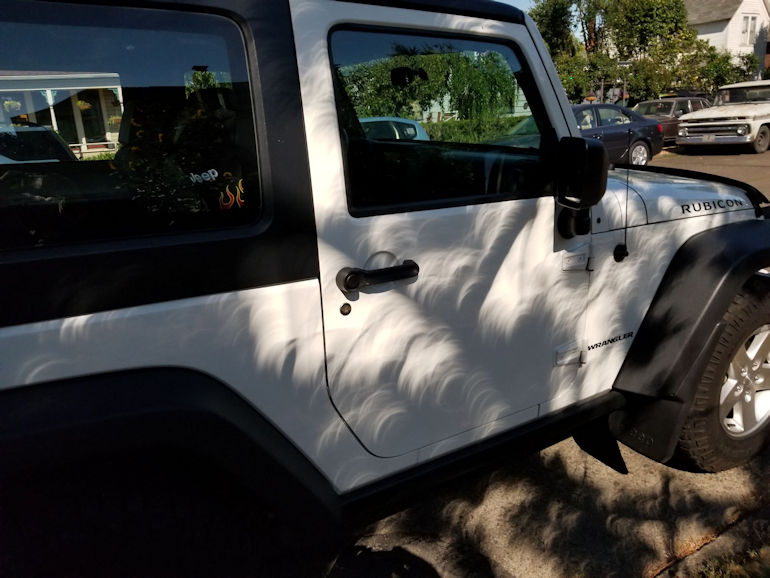Eclipses
|
"Nothing can be sworn impossible since Zeus made night during mid-day, hiding the light of the shining Sun." ~ Archilochus
|
|
|
Solar Eclipse Solar Eclipses come in three types; total, partial, and annular. The appearance of each of these depends on the density of the lunar shadow that passes over your location. The type and the duration of an eclipse is affected by the relative distances between the Sun, Moon, and Earth at the time of the event. The path of the umbra across the Earth (totallity) is typically only a few hundred kilometers across. Observers of totallity see the Moon's disk completely cover the Sun. During this time the sky becomes dark enough to see the corona, which is the Sun's hair-like outer atmosphere. There is a band on either side of the path of totality where the penumbra creates a partial eclipse. The observers of a partial solar eclipse see only a portion of the Sun's disk covered by the Moon. Sometimes the path of totality includes areas with an annular eclipse because for part of the path the umbra does not quite reach the Earth's surface. During an annular eclipse the observers see the outer edge of the Sun as a ring around the Moon. 
Lunar Eclipse Lunar Eclipses occur when the Moon passes through the shadow of the Earth. Like a solar eclipse, totallity occurs when the umbra of the shadow covers your location. A partial eclipse occurs  when your location presents part of the Moon within the penumbra. Unlike a solar eclipse, the path of
totallity
is observable from the entire hemisphere of the Earth's surface.
when your location presents part of the Moon within the penumbra. Unlike a solar eclipse, the path of
totallity
is observable from the entire hemisphere of the Earth's surface.
The Earth's atmosphere scatters sunlight and prevents the Moon from becoming completely black during a total lunar eclipse. The scattered light can make the Moon appear anywhere from brown and red to orange and yellow. The colors depend on how much dust and moisture are present in Earth's atmosphere during the event. The colors tend to be darker after major volcanic eruptions. During the lunar eclipse of December 1992, dust from the eruption of Mount Pinatubo made the Moon almost invisible. |

